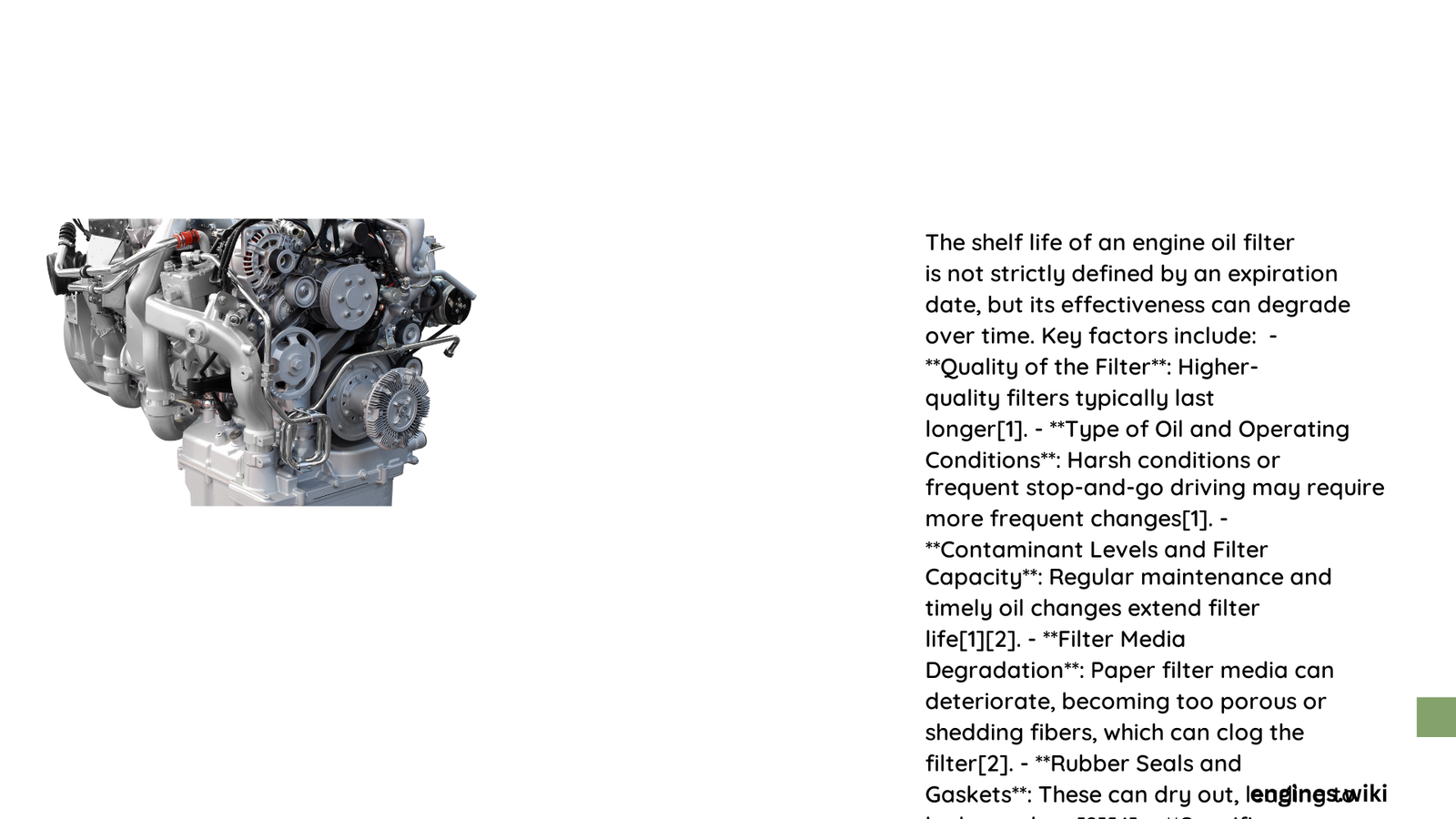Engine oil filters are critical components that protect your vehicle’s engine from contaminants, but their effectiveness depends on proper storage, handling, and timely replacement. While manufacturers like FRAM recommend a 2-year shelf life, various factors influence the actual longevity of oil filters, ranging from storage conditions to environmental exposure. Understanding these nuances can help vehicle owners maintain optimal engine performance and prevent potential costly damages.
What Determines the Shelf Life of an Engine Oil Filter?
Storage Conditions Impact
The shelf life of an engine oil filter is significantly influenced by storage conditions. Factors that affect longevity include:
- Temperature Stability: Extreme heat or cold can degrade filter materials
- Humidity Levels: Moisture can cause corrosion and material breakdown
- Original Packaging: Keeping filters in sealed, manufacturer packaging preserves integrity
Manufacturer Recommendations
| Brand | Recommended Shelf Life | Storage Guidelines |
|---|---|---|
| FRAM | 2 years | Original packaging, dry environment |
| Mobil | 3-5 years | Cool, dry place away from direct sunlight |
| Bosch | Up to 5 years | Sealed container, moderate temperature |
How Long Can an Unused Oil Filter Last?

Unused oil filters can potentially remain viable for 5-10 years under ideal conditions. However, several critical factors influence their actual usability:
- Material Degradation
- Rubber seals may become brittle
- Filter media can lose structural integrity
-
Chemical composition might change
-
Environmental Exposure
- Direct sunlight accelerates material breakdown
- High humidity increases corrosion risk
- Extreme temperature fluctuations compromise filter performance
What Risks Exist with Using an Expired Oil Filter?
Continuing to use an expired or improperly stored oil filter can lead to significant engine complications:
- Reduced Lubrication Efficiency
- Increased Engine Wear
- Potential Catastrophic Engine Failure
- Compromised Oil Filtration
Replacement Cost Comparison
| Scenario | Oil Filter Cost | Potential Repair Cost |
|---|---|---|
| Timely Replacement | $10 – $25 | Minimal |
| Delayed Replacement | $10 – $25 | $500 – $5,000 |
Best Practices for Oil Filter Storage and Maintenance
- Store in Original Packaging
- Keep in Cool, Dry Environment
- Avoid Direct Sunlight
- Check Manufacturing Date
- Follow Vehicle Manufacturer Recommendations
When Should You Replace Your Oil Filter?
Recommended replacement intervals vary, but general guidelines suggest:
- Standard Driving: Every 5,000 – 7,500 miles
- Severe Driving Conditions: Every 3,000 – 5,000 miles
- Synthetic Oil Usage: Up to 10,000 miles
Key Indicators for Replacement
- Visible contamination
- Reduced oil pressure
- Unusual engine noise
- Exceeded recommended mileage interval
Conclusion
Understanding the shelf life of engine oil filters requires attention to storage, usage conditions, and manufacturer guidelines. Regular inspection and timely replacement are crucial for maintaining engine health and preventing expensive repairs.
